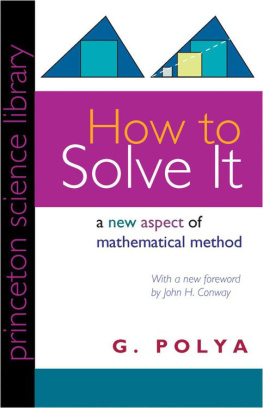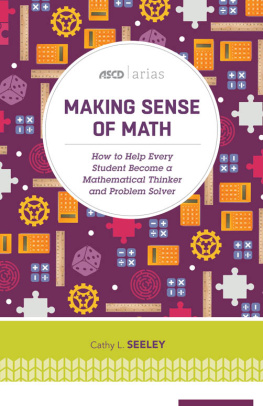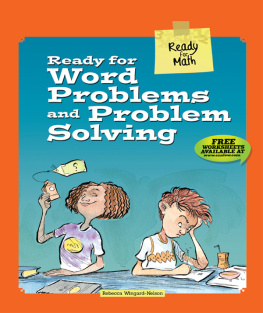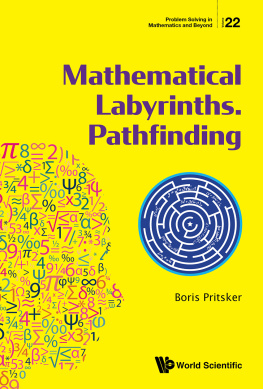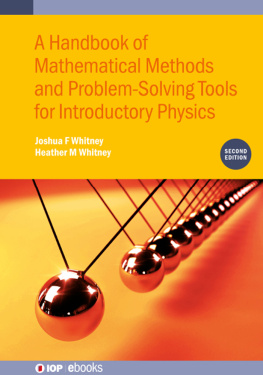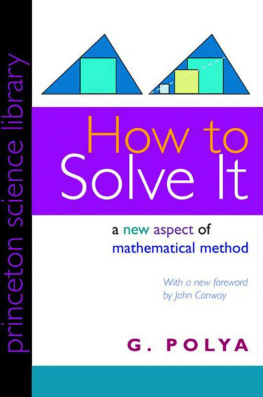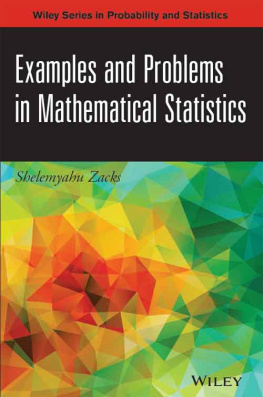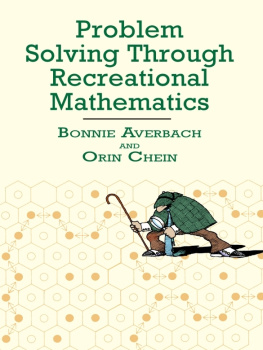How to Solve It
How to Solve It

A New Aspect of
Mathematical Method
G. POLYA
With a new foreword by John H. Conway

Copyright 1945 by Princeton University Press
Copyright renewed 1973 by Princeton University Press
Second Edition Copyright 1957 by G. Polya
Second Edition Copyright renewed 1985
by Princeton University Press
All Rights Reserved
First Princeton Paperback printing, 1971
Second printing, 1973
First Princeton Science Library Edition, 1988
Expanded Princeton Science Library Edition,
with a new foreword by John H. Conway, 2004
Library of Congress Control Number 2004100613
ISBN-13: 978-0-691-11966-3 (pbk.)
ISBN-10: 0-691-11966-X (pbk.)
British Library Cataloging-in-Publication Data is available
Printed on acid-free paper.
psl.princeton.edu
Printed in the United States of America
3 5 7 9 10 8 6 4
From the Preface to the First Printing
A great discovery solves a great problem but there is a grain of discovery in the solution of any problem. Your problem may be modest; but if it challenges your curiosity and brings into play your inventive faculties, and if you solve it by your own means, you may experience the tension and enjoy the triumph of discovery. Such experiences at a susceptible age may create a taste for mental work and leave their imprint on mind and character for a lifetime.
Thus, a teacher of mathematics has a great opportunity. If he fills his allotted time with drilling his students in routine operations he kills their interest, hampers their intellectual development, and misuses his opportunity. But if he challenges the curiosity of his students by setting them problems proportionate to their knowledge, and helps them to solve their problems with stimulating questions, he may give them a taste for, and some means of, independent thinking.
Also a student whose college curriculum includes some mathematics has a singular opportunity. This opportunity is lost, of course, if he regards mathematics as a subject in which he has to earn so and so much credit and which he should forget after the final examination as quickly as possible. The opportunity may be lost even if the student has some natural talent for mathematics because he, as everybody else, must discover his talents and tastes; he cannot know that he likes raspberry pie if he has never tasted raspberry pie. He may manage to find out, however, that a mathematics problem may be as much fun as a crossword puzzle, or that vigorous mental work may be an exercise as desirable as a fast game of tennis. Having tasted the pleasure in mathematics he will not forget it easily and then there is a good chance that mathematics will become something for him: a hobby, or a tool of his profession, or his profession, or a great ambition.
The author remembers the time when he was a student himself, a somewhat ambitious student, eager to understand a little mathematics and physics. He listened to lectures, read books, tried to take in the solutions and facts presented, but there was a question that disturbed him again and again: Yes, the solution seems to work, it appears to be correct; but how is it possible to invent such a solution? Yes, this experiment seems to work, this appears to be a fact; but how can people discover such facts? And how could I invent or discover such things by myself? Today the author is teaching mathematics in a university; he thinks or hopes that some of his more eager students ask similar questions and he tries to satisfy their curiosity. Trying to understand not only the solution of this or that problem but also the motives and procedures of the solution, and trying to explain these motives and procedures to others, he was finally led to write the present book. He hopes that it will be useful to teachers who wish to develop their students ability to solve problems, and to students who are keen on developing their own abilities.
Although the present book pays special attention to the requirements of students and teachers of mathematics, it should interest anybody concerned with the ways and means of invention and discovery. Such interest may be more widespread than one would assume without reflection. The space devoted by popular newspapers and magazines to crossword puzzles and other riddles seems to show that people spend some time in solving unpractical problems. Behind the desire to solve this or that problem that confers no material advantage, there may be a deeper curiosity, a desire to understand the ways and means, the motives and procedures, of solution.
The following pages are written somewhat concisely, but as simply as possible, and are based on a long and serious study of methods of solution. This sort of study, called heuristic by some writers, is not in fashion nowadays but has a long past and, perhaps, some future.
Studying the methods of solving problems, we perceive another face of mathematics. Yes, mathematics has two faces; it is the rigorous science of Euclid but it is also something else. Mathematics presented in the Euclidean way appears as a systematic, deductive science; but mathematics in the making appears as an experimental, inductive science. Both aspects are as old as the science of mathematics itself. But the second aspect is new in one respect; mathematics in statu nascendi, in the process of being invented, has never before been presented in quite this manner to the student, or to the teacher himself, or to the general public.
The subject of heuristic has manifold connections; mathematicians, logicians, psychologists, educationalists, even philosophers may claim various parts of it as belonging to their special domains. The author, well aware of the possibility of criticism from opposite quarters and keenly conscious of his limitations, has one claim to make: he has some experience in solving problems and in teaching mathematics on various levels.
The subject is more fully dealt with in a more extensive book by the author which is on the way to completion.
Stanford University, August 1, 1944
From the Preface to the Seventh Printing
I am glad to say that I have now succeeded in fulfilling, at least in part, a promise given in the preface to the first printing: The two volumes Induction and Analogy in Mathematics and Patterns of Plausible Inference which constitute my recent work Mathematics and Plausible Reasoning continue the line of thinking begun in How to Solve It.
Zurich, August 30, 1954
Preface to the Second Edition
The present second edition adds, besides a few minor improvements, a new fourth part, Problems, Hints, Solutions.
As this edition was being prepared for print, a study appeared (Educational Testing Service, Princeton, N.J.; cf. Time, June 18, 1956) which seems to have formulated a few pertinent observationsthey are not new to the people in the know, but it was high time to formulate them for the general public:... mathematics has the dubious honor of being the least popular subject in the curriculum... Future teachers pass through the elementary schools learning to detest mathematics... They return to the elementary school to teach a new generation to detest it.
I hope that the present edition, designed for wider diffusion, will convince some of its readers that mathematics, besides being a necessary avenue to engineering jobs and scientific knowledge, may be fun and may also open up a vista of mental activity on the highest level.
Next page
